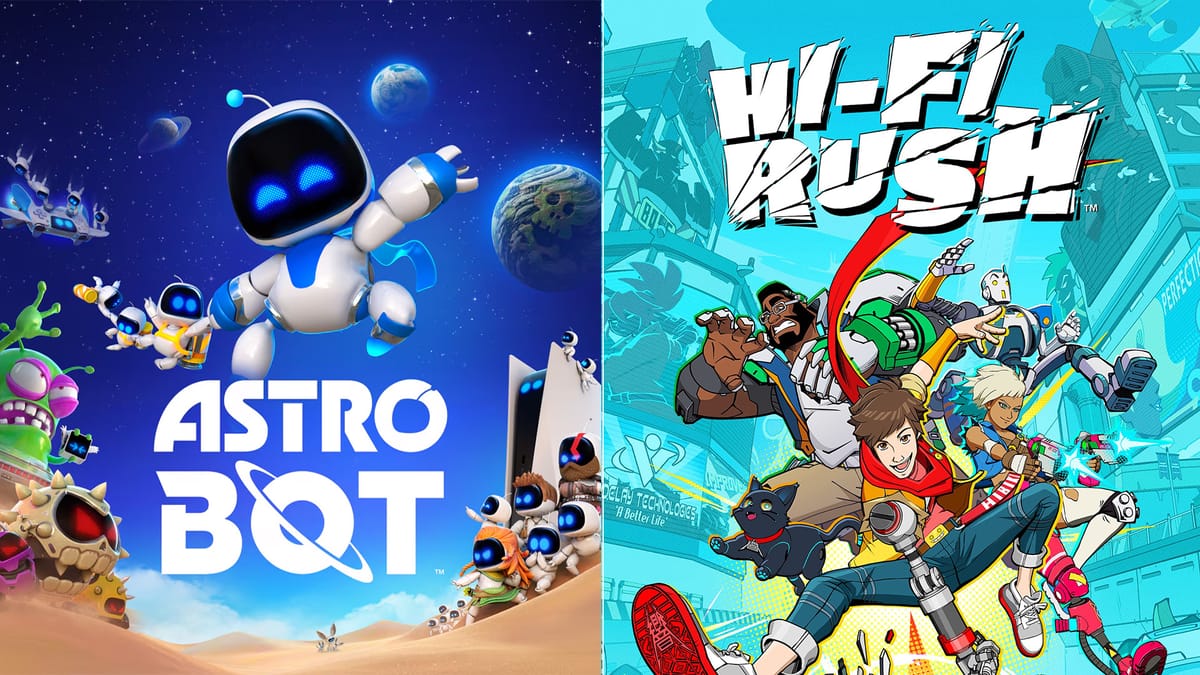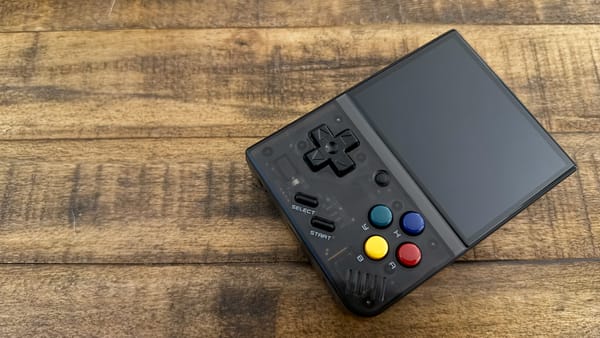Astro Bot, Hi-Fi Rush, and a new definition for cozy games, part two
What if a game was a TV show in spirit?

Last time on Backlog, I made an argument for a new definition of cozy games centered around the idea that people do, in fact, share couches and screens with loved ones, even while enjoying single-player games. (Big if true!) In that post, I essentially made the claim that, in emphasizing unstructured play for the sake of of play—that is, encouraging the player through audiovisual cues to just mess around with no direct, gameplay-related rewards—Astro Bot was a case study in something that was just as cozy to watch as it was to play.
Now, two weeks later, I intend to argue that, by doing almost the polar opposite, Hi-Fi Rush also manages to be a perfect cozy game for player and viewer alike.
To get it out of the way, damn is it ever sad what Hi-Fi Rush developer Tango Gameworks went through this past year. While it seems like, perhaps, development on Hi-Fi Rush 2 may be going apace, it was and remains wild that a game of this level of quality—by all means a surprise hit—would find itself rewarded by a studio closure. So as not to belabor the point any longer, because I have cozy pontification to get to, I happen to cosign a very particular starting place for redressing these kinds of brutal business decisions.
With that out of my system, let me dive in and say: Hi-Fi Rush could’ve been a TV show, but I’m glad it wasn’t.
TV shows, per my previous definition about sharing a screen in a household, are perhaps the ultimate cozy media. Should you live with someone, or should you have had a friend, a roommate, or even a pet who is sensitive to certain sounds (yes, I’m talking about you, Fraya), you know very well the difficulty of the question, What should we watch tonight? The thing about TV, though, is that it’s kind of infinite, especially in the streaming era. You will, in all likelihood, find something that will suit your collective interests. Which is why I’m glad that Hi-Fi Rush, which very well could’ve been a very snappy animated series on Netflix, is, in fact, a game.
Unlike Astro Bot, there’s not a lot of play-for-play’s-sake here, and that’s by design. The entire game is set to a beat, requiring the player to time button presses to the BPM of whatever track happens to be playing. It’s like if Guitar Hero married Double Dragon, and their kid got really into anime. But it’s that central conceit—everything timed to the beat—that makes it so the game must remain on track at all times. Combat encounters, whether they are garden-variety baddies or screen-filling bosses, all cohere to the beat, creating anticipatable pockets of action for the player—and the viewer.
If there was a kind of chaotic pleasure in viewing Astro Bot’s purposeless (in a good way) physics, there’s a diametric pleasure to be found in the feeling of grooving along to Hi-Fi Rush’s beat. For the player, the joy is obvious: it is rad to bop a robot with a guitar while a Nine Inch Nails song plays. That’s just empirically true. No one could dispute that, and if they did, they lack a soul. Much like its rhythm game brethren, there is a sense of flow to each button press in Hi-Fi Rush. For the viewer, though, the enjoyment arises not so much from the feeling of a well-timed button press, but instead from the anticipatable cadence at which the game’s action takes place.
People love surprise, it’s true. Whether it’s in film, literature, games, or even music, an element that diverges from expectations often jolts us out of our comfort zone and into a feeling of elevated attention. Almost paradoxically, our failure to anticipate elevates our desire to anticipate, and thus we pay ever more attention after having our attention upended. Surprise is fun, but I might argue that, for a person watching someone else playing games, too much surprise can be a detriment.
Let’s take Returnal as an example. The game is, in its own way, very anticipatable once you understand its visual language. The problem is that its visual language is not only hyper complex (thus the phrase “bullet hell”), but also requires total attention from the player (and thus any viewer) via the memorization of any and all patterns, which I don’t think is realistic for a passive viewer of a game. The player is always in the driver’s seat, so to speak, remembering all the hours they’ve spent absorbing countless bits of information, but the viewer, because they are not actively manipulating the scene, does not experience the game in the same way. They absorb some, but not all, of the information the game is presenting. They may, indeed, look away momentarily, or more than momentarily, drifting in and out of the experience. When the viewer returns to viewing, though, there is a good chance that they will not be able to anticipate all that the player can anticipate by dint of their not being in the driver’s seat.
Not so with Hi-Fi Rush. By locking the game’s input patterns to literal songs, it trades in a common language of music and of dance. The viewer can, in this instance, look away or be otherwise engaged with a separate activity and still, with great certitude, know when a boss’s attack is about to hit. They can anticipate when input is needed just as well as the player, because, in choosing an accessible medium (music) as a ludic baseline, this common language allows for a more accessible starting point for all participants in the game—player and viewer.
This is why, I think, Hi-Fi Rush is so cozy, by my definition. Someone could literally have seen none of the game, walk in on the final boss, and have a good idea of when and how you are supposed to react. They could have fun watching five minutes or five hours. Though single-player in nature, by using music as a common language, Hi-Fi Rush bridges the game between player and viewer, allowing them both to feel perfectly in the pocket, regardless of whether they have a controller in their hand or not.
To me, that’s cozy. To me, that’s Couch Time™–worthy. And that’s why I’m begging the universe, please, dear god, let us have a Hi-Fi Rush 2.





